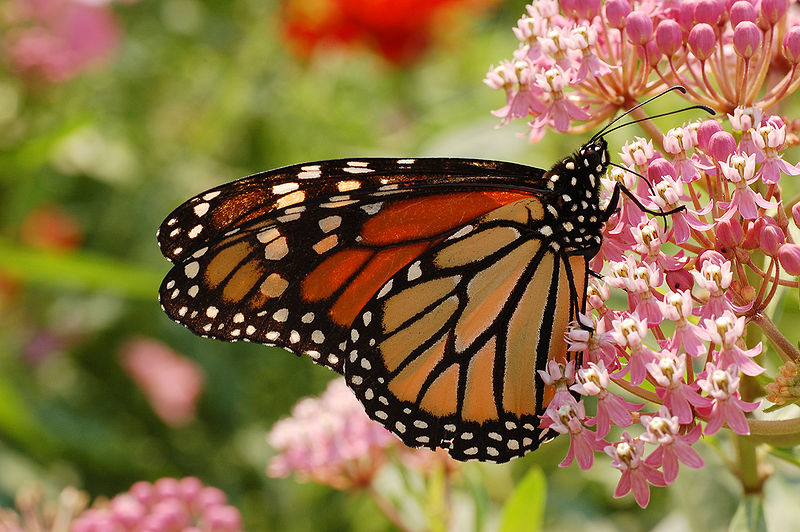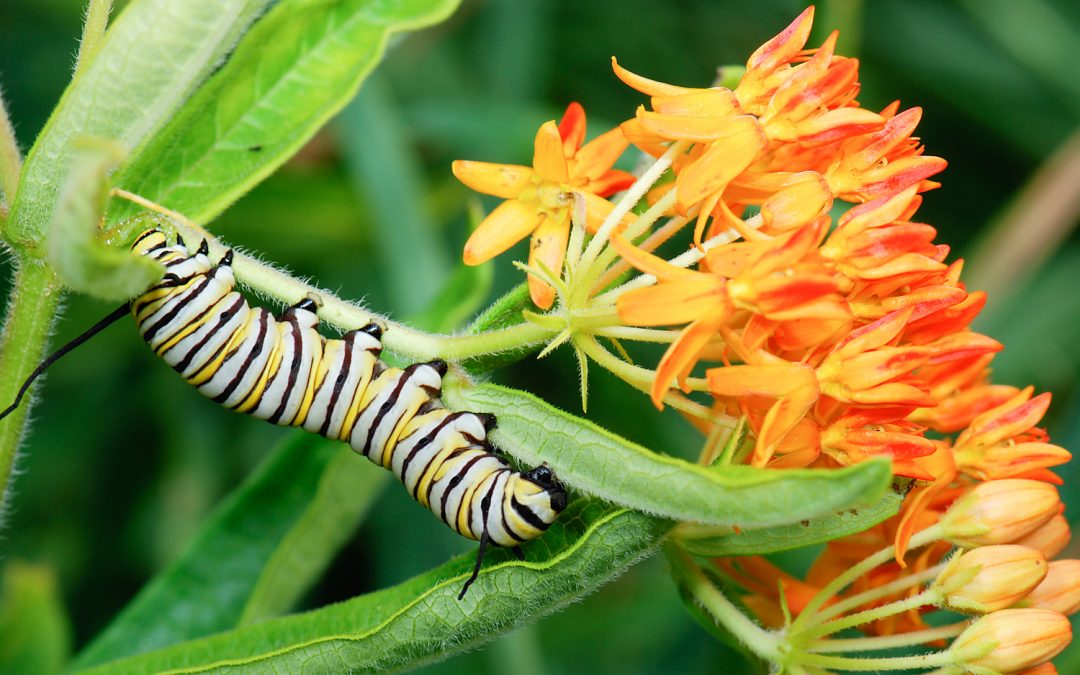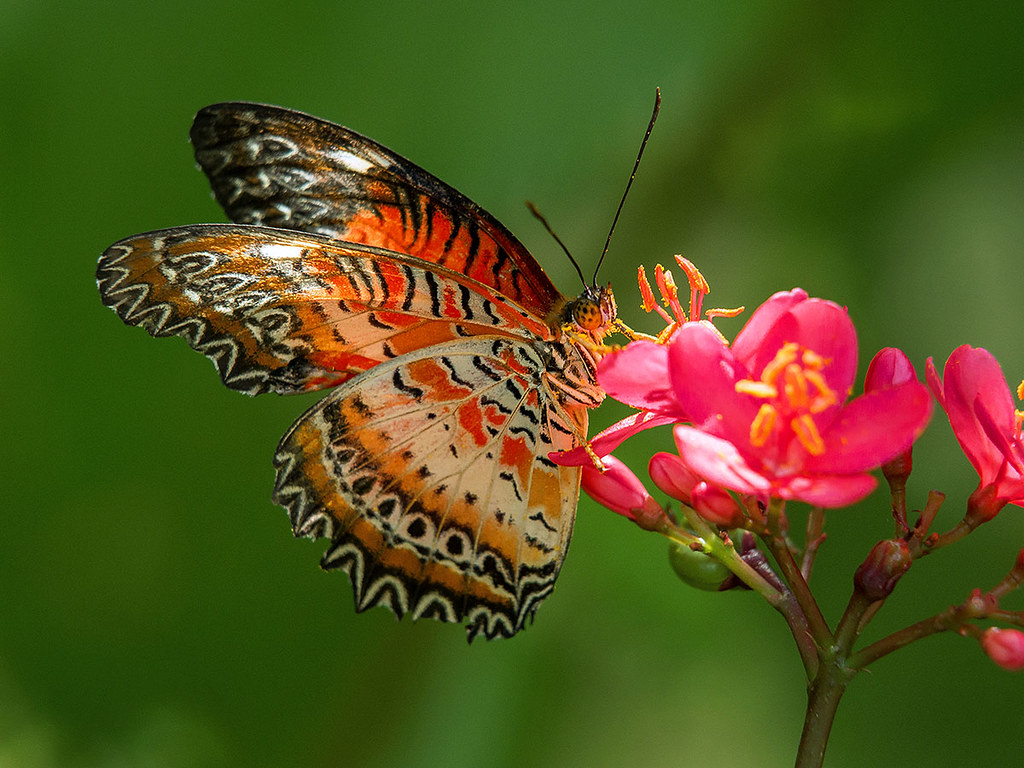Day after day we hear in the news about how one person can’t make a difference in our world. Are you ready to make a huge difference by doing something very small? The Monarch butterfly and other pollinators need our help. Desperately. You can help by planting milkweed. Let’s All Plant Weeds.
Milkweed has been virtually eliminated on America’s farms due to the overuse of pesticides such as Roundup.

Let’s All Plant Weeds
The butterfly and other important pollinators feed on milkweed, lay their eggs on milkweed and go through their caterpillar metamorphous phase on milkweed.

You may recall that I am a huge proponent of buying local and organic. There are many reasons that I do this. First and foremost I do it for the health of my family. But other factors include that the aggressive use of pesticides in non-organic farming is slowing killing our pollinators such as bees and butterflies. The pesticide is rampant in our soil and the runoff pollutes our water.
People say they cannot afford organic. Not to be Dolly Doomsday, but medical treatment for various diseases is far more expensive versus buying a $5 bag of organic produce over a $2 bag. Not to mention the organic tastes so much better because its growing cycle is not forced. Flavor develops naturally.
Organic strawberries, which are currently in season, need no sugar. They are red right through.

Precious Pollinators
If we lose the pollinators we also lose the ground-nesting birds and small mammals that also share the butterflies habitat. In turn, if we lose those creatures we then lose the predators that feed on them and the downward cycle continues. Simply put, if we lose plant integrity the ecosystem suffers.
There is an excellent video that covers the migration area of the Monarch butterflies, why they are in danger and how you can easily help. It is worth the watch.
[youtube https://www.youtube.com/watch?v=maM2gl30cJc]
My garden is taking forever to get under control because we are killing off aggressive monkey grass and vines the old-fashioned way… by pulling/digging it all out by hand. I hope by next spring to plant a variety of milkweed that matches the color palette of my garden.
Antelope Horns milkweed is native to Texas. It is a soft green and white.
Milkweed reminds me a bit of hydrangea. I love swamp milkweed that does well in moist environments like in Minnesota and Wisconsin.
Here is an excellent site than can aide you in your search for milkweed that is native to the area in which you live.
If you can’t get on board with growing milkweed our pollinators and butterflies also need lilies and other nectar flowers which is their food source. You can simply google “How to plant a butterfly garden” and many sites are available. The National Wildlife Federation is the site I read.

So will you plant weeds to help make a huge difference?
Laura
“And to every beast of the earth and to every bird of the heavens and to everything that creeps on the earth, everything that has the breath of life, I have given every green plant for food.” ~ Genesis 1:30
I've been pulling up Monkey Grass like crazy this year. Mine has gotten huge but it is low maintenance and can stand up to the Texas heat. Have a wonderful Sunday.
We have finally gotten people's attention here in our area that milkweed is NOT a weed but necessary to butterflies, etc. We have scattered seeds all over our property and this year we had more Monarchs than we have had in years, plus I have noticed more bees. We garden organically and our pumpkins this year have gone berserk! If only the bindweed would just go away … Thanks for a terrific post!
Laura,
I've ordered my milkweed seeds!
Ginene
Hi Laura. So many good points and I worry about those monarchs. We had milkweed growing rampant at the lake and before I knew how dependent monarchs were for it, I yanked most of it out. When I wrote about it on my blog, and this was about three years ago, I was told how it important it was. Thankfully the plants reseeded in a few other spots around the lakehouse and we are good. And now I have it popping up here in the city. Maybe I brought some of the seeds home on my flip flops?! Another good thing you can do is plant dill and parsley. The little caterpillars love to nibble on those plants for nourishment. They ate my dill to death but I must have had about 5 caterpillars on at a time this past summer.
Thank you so much for your last comment—you are a fantastic blog friend, too!
Jane x
Thank you so much, Laura, for sharing this very important information!! ♥
You know my thoughts and yes by next year, I plan to have a TON of Milkweed growing in our yard. I grew the Swamp Milkweed from seed this year and although it's never bloomed, the small little patch that I grew, attracted Monarchs who laid their eggs and we ended up with 5 Monarch Caterpillars and are now watching the Chrysalis stage on a nearby plant of Sedum. It's been such a remarkable process to watch and as you pointed out, we can't afford NOT to help them along. I only wish that the State would quit mowing down the native grasses/wildflowers along the roadways – we need to learn to live with natural habitats and quit trying to prune everything back!!
Love,
Linda
Ordered! 🙂
xo